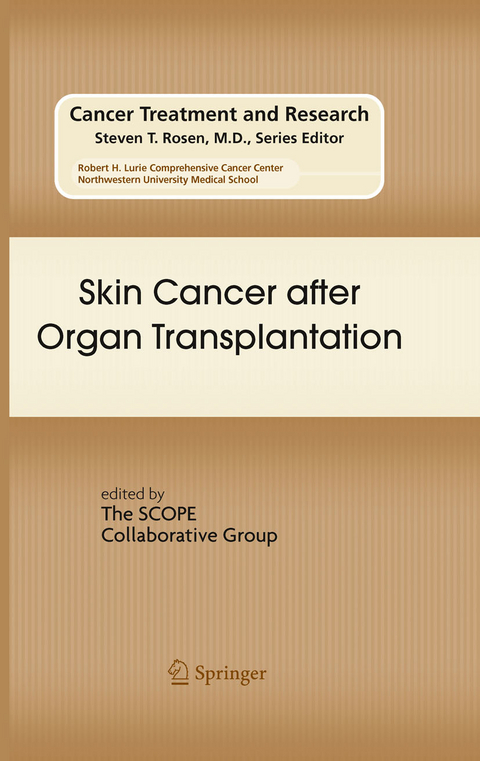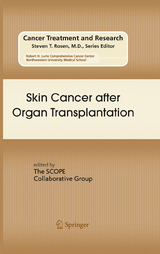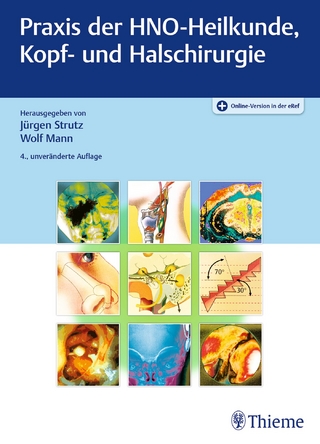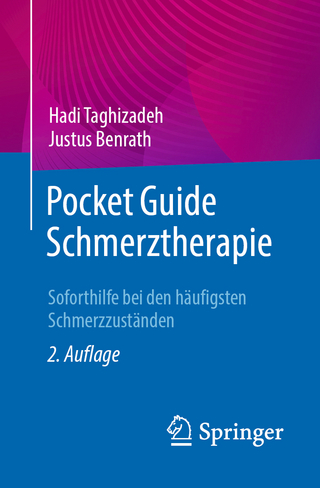Skin Cancer after Organ Transplantation
Springer-Verlag New York Inc.
978-0-387-78573-8 (ISBN)
Organ transplantation has been performed for almost 40 years with steadily increasing success regarding long-time survival of the graft, as well as quality of life for the patient. However, graft tolerance only can be achieved via induction and maintenance of an impaired immunological surveillance. An increase of skin cancers as a consequence of the lowered cellular immunoresponse seems to parallel the overall increased long-time survival rate of organ transplant recipients. Against the background of chronic immunosuppression known risk factors like the amount of sun exposure prior and post transplantation, oncogenic viruses as well as the genetic background, and place of residence (latitude) are strongly related with the increased skin cancer incidence.
The increasing incidence of non-melanoma skin cancer, paralleling a prolonged survival of patients after organ transplantation, represents a significant reason for morbidity and long-term morbidity in organ transplant recipients worldwide. The incidence of non-melanoma skin cancer in liver-, kidney- and heart transplant recipients varies from 1.5 to 22 %, 2 to 24 % and 6 to 34 % after < 5 years post transplant. Ultraviolet radiation as well as immunosuppressive therapy are crucial risk-factors regarding the induction and progression of skin cancer. Ultraviolet radiation is related to the induction of DNA damage, as well as interference with Langerhans cell antigen presentation and a Th1 – Th2 shift induced via a release of IL-10. Whereas the overall duration of immunosuppression and the cumulative dosage applied are relevant parameters in the evaluation of an increased tumor risk, individual differences between specific immunosuppressive agents remain unclear. The workup of genetic as well as other unclear phenomenon like the reverse BCC/SCC ratio might shed some further light into the genesis and immunology of the non-melanoma skin cancer in general.
– Historical Perspective.- – Historical Perspective.- Skin Cancer After Transplantation: Where Did We Come From, Where Do We Go?.- Transplant Medicine.- De Novo Post-Transplantation Malignancies: Incidence and Risk Factors.- Immunosuppression.- Skin Immune System.- Post-Transplant Cancer.- Post-Transplant Skin Cancer: The Influence of Organ and Pre-Transplant Disease.- The Epidemiology of Transplant-Associated Keratinocyte Cancers in Different Geographical Regions.- Etiological Factors in Cutaneous Carcinogenesis – An Introduction.- Photocarcinogenesis – DNA Damage and Gene Mutations.- Ultraviolet-Induced Immunosuppression: Implications for Photocarcinogenesis.- Carcinogenic Mechanisms Related to Immunosuppressive Therapy.- Oncogenic Viruses.- Epidemiology of Cutaneous Human Papillomavirus Infections.- Interaction Between Ultraviolet Radiation and Human Papillomavirus.- Human Herpesvirus 8.- Molecular Events in Skin Cancer.- Molecular Pathogenesis of Basal Cell Carcinoma.- Molecular Pathogenesis of Squamous Cell Carcinoma.- New Trends in the Susceptibility to Melanoma.- Specific Skin Cancers.- Actinic Keratoses.- Squamous Cell Carcinoma.- Basal Cell Carcinoma.- External Anogenital Premalignant and Malignant Disease.- Kaposi’s Sarcoma.- Malignant Melanoma.- Rare Skin Cancers.- Merkel Cell Carcinoma.- Cutaneous Lymphomas.- Appendageal Malignancies.- Prophylaxis and Therapy.- The Role of the Transplant Physician in the Management of Skin Cancers After Organ Transplantation.- Pretransplantation Dermatologic Screening and Prophylaxis.- Aftercare – A Multi-disciplinary Approach.- Evaluation of Patient Education.- Sunscreens and Sun Protection.- Surgical Intervention for Skin Cancer in Organ Transplant Recipients.- Topical Treatment of Field Cancerization.-Destructive Management of Skin Cancers in Organ Transplant Recipients.- Systemic Chemoprevention.- Management of Metastatic Skin Cancers in Organ Transplant Recipients.
| Reihe/Serie | Cancer Treatment and Research ; 146 |
|---|---|
| Zusatzinfo | XVII, 497 p. |
| Verlagsort | New York, NY |
| Sprache | englisch |
| Maße | 155 x 235 mm |
| Themenwelt | Medizin / Pharmazie ► Medizinische Fachgebiete ► Chirurgie |
| Medizin / Pharmazie ► Medizinische Fachgebiete ► Dermatologie | |
| Medizin / Pharmazie ► Medizinische Fachgebiete ► Onkologie | |
| ISBN-10 | 0-387-78573-6 / 0387785736 |
| ISBN-13 | 978-0-387-78573-8 / 9780387785738 |
| Zustand | Neuware |
| Haben Sie eine Frage zum Produkt? |
aus dem Bereich




